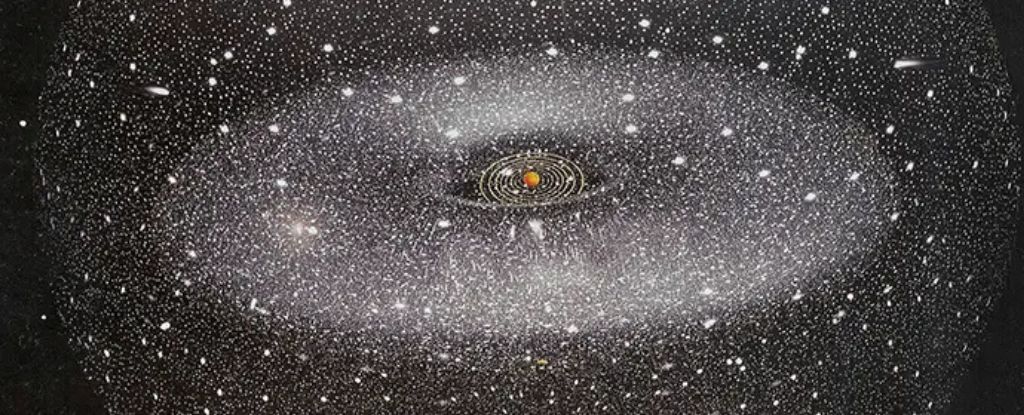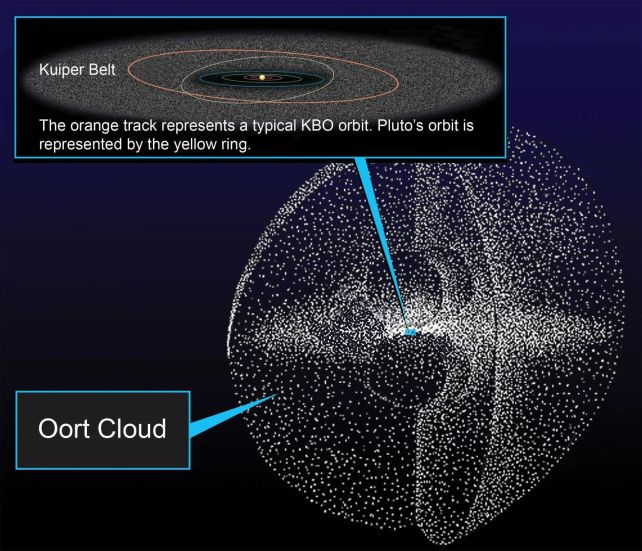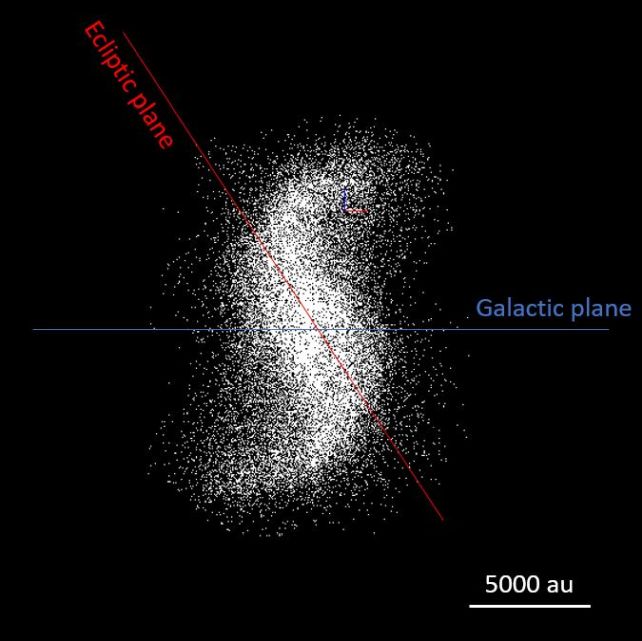
The outskirts of the Solar System present a fascinating yet peculiar region, filled with enigmatic phenomena that scientists have only recently begun to explore. Among these mysteries, the Oort Cloud stands out—a colossal expanse of icy remnants that stretches potentially up to 100,000 times the Sun-Earth distance.
While we possess a generalized understanding of the Oort Cloud’s dimensions and contours, the intricate details remain elusive. Recent computational research has unveiled an unexpected finding: a spiral structure formed by the gravitational influences of our home galaxy, the Milky Way.
This significant discovery, which is in the process of publication in The Astrophysical Journal, can currently be found on the preprint server arXiv.
According to the lead researcher, astronomer David Nesvorný from the Southwest Research Institute, “As the tidal forces from the galaxy act to influence celestial bodies within the scattered disk, a spiral formation emerges in physical space, measuring approximately 15,000 astronomical units in length. This spiral structure has remained stable, existing in the inner Oort Cloud to this day.”
The outer regions of the Solar System are notoriously challenging to investigate. We are aware of numerous small, icy bodies located in the Kuiper Belt beyond Neptune. Beyond this lies the Oort Cloud, which spans distances from around 1,000 to 100,000 astronomical units, marking the outer limits of the Sun’s gravitational reach.
This distant region is notable for being the origin of the Solar System’s long-period comets, which are displaced from their orbits and propelled toward the Sun, where they release gas as their icy cores vaporize.
Furthermore, the Oort Cloud is generally recognized as having two main sections. The outer part forms a vast spherical envelop that extends out to about 10,000 astronomical units from the Sun, while the inner Oort Cloud is modeled more as a toroidal or donut shape, ranging from 1,000 to 10,000 astronomical units.
Most long-period comets originate from the outer Oort Cloud. In contrast, the inner region exhibits greater stability due to its proximity to the Sun’s gravitational forces, which keep it less vulnerable to disruptions from nearby stars that can disturb the outer cloud.
Thanks to this stability, the inner Oort Cloud has traditionally been depicted as a relatively flat disk aligned with the Solar System’s ecliptic plane.

Nesvorný and his team have dedicated years to studying the inner Oort Cloud. In their latest research, they employed NASA’s Pleiades Supercomputer to model this debris field, considering both the gravitational forces of the Sun and the external influences of the Milky Way, alongside the trajectories of comets.
They simulated the 4.6 billion-year history of the Solar System, which began when the Sun formed from a dense molecular cloud of gas and dust. This primordial material eventually coalesced into planets, asteroids, comets, and the outer Oort Cloud.
However, the simulations indicate that the inner Oort Cloud does not conform to a simple toroidal shape. Instead, it reflects the structure of the Milky Way with a spiral formation that shows a similar warp to the galactic disk warp. This spiral structure spans approximately 15,000 astronomical units in diameter and is inclined at an angle of 30 degrees relative to the ecliptic plane.

From afar, this structure would appear as a spiral with two twisting arms.
The simulations indicate that this formation likely originated early in the Solar System’s development, within the first few hundred years following its inception. Remarkably, this spiral structure has remained stable throughout time. Even with the occasional close passes of neighboring stars, it remains intact, implying that it’s unaffected by the gravitational shifts caused by these stellar encounters.
In an effort to validate their observations, the researchers revisited earlier studies, which consistently pointed toward a spiral configuration for the inner Oort Cloud, regardless of variations in simulation parameters.
While directly observing this spiral will be an enormous challenge, its alignment with observational data and its appearance in previous investigations—some of which did not even seek it out—makes it a compelling finding.
Understanding the Oort Cloud’s mysteries involves looking back into the Solar System’s distant past, revealing the dynamic processes that shaped its formation and evolution. Delving into such complex topics can be worth the effort.
The findings from this research will be published in The Astrophysical Journal and can be accessed on arXiv.









